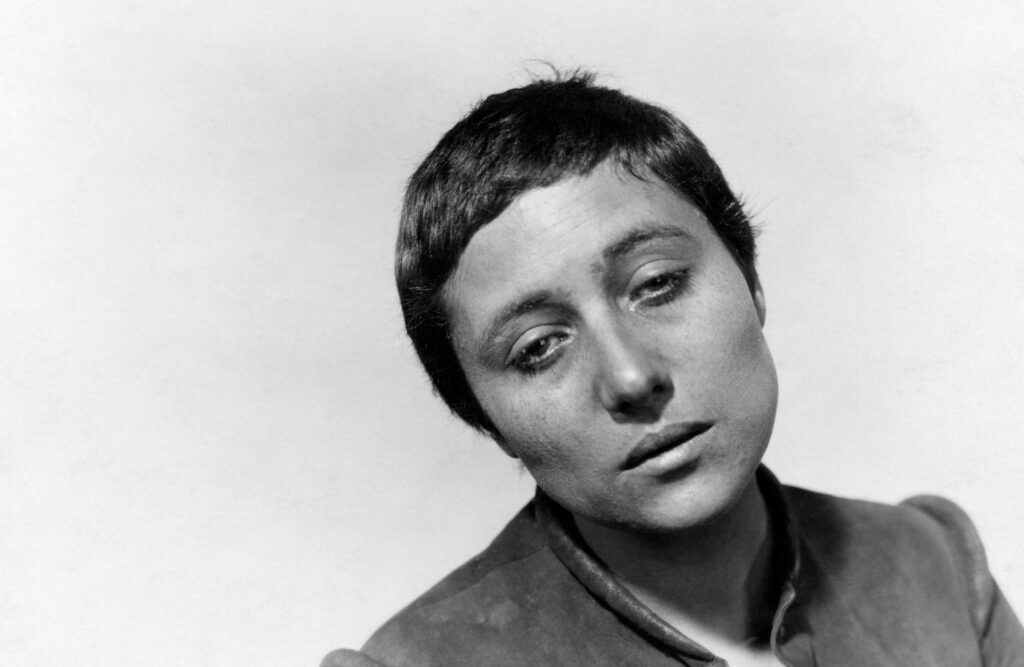Classic Film: The Passion of Joan of Arc
Written by Ian Thomas Malone, Posted in Blog
The Passion narrative carries a lot of theatrical value even for non-believers. The sham trials of Jesus before the Sanhedrin and Pontius Pilate perhaps best illustrate the larger-than-life nature of one of history’s defining characters, a man grappling with the contrast of divinity and humanity in real time. The 1928 silent film The Passion of Joan of Arc (original French title La Passion de Jean d’Arc) blends the history of one of France’s most beloved icons with the biblical tribulations of her spiritual lodestar.
Director Carl Theodor Dreyer’s work is a singular experience in filmmaking. Relying heavily on close-ups, with an absolutely breathtaking concrete practical set, the narrative sets up a succulent contrast throughout its 82-minute runtime. As the titular heroine, Renée Jeanne Falconetti’s expressive dramatic range evokes a sense of claustrophobia, buoyed by the imposing prison all around her. Falconetti never once lets up on all the angst coursing through Joan’s veins, delivering one of the finest performances in the history of film.
The silent film medium is perfect for the kind of storytelling on display in the film. The inter-title cards provide the necessary grounding for the audience to follow along with the plot, giving space for the actors to transcend all other conventional dramatic obligations. The musical accompaniment to Joan’s agony and the Machiavellian machinations strips the form down to its bare essentials, an immensely fulfilling adaption of the passion narrative.
All art is essentially human nature channeled through the creator’s preferred medium. There are limits to what a painting can do on a canvas or a film on its reel. Dreyer delivers a timeless treatise on the agony of the soul that bristles against the confines of its structure, a film so carefully constructed yet completely raw in its delivery. The Passion of Joan of Arc grabs you from its opening minutes and never lets go, an exhausting experience that drains almost as much as it inspires.
Perhaps more impressive than its ample artistic merits is the way the film breaks down the terrifying sense of awe and wonder of Catholicism, particularly its penchant for evoking guilt, for a general audience. Religion looms over much of popular culture and society at large, even for those of us who have nothing to do with the Church. Many religious narratives fall flat through their preoccupation with attempting to explain the unexplainable. The whole point of faith is belief in something larger than yourself, essentially for little reason other than it’s what you’ve chosen to believe. It’s not particularly convincing for many, for obvious reasons.
Billions of people have come and left this earth hanging on to a promise of eternal life that may never come. The Passion of Joan of Arc does not make much of an effort to explain why its titular hero chose martyrdom at the hands of a sham trial. What it does achieve is perhaps the most impressive feat for a religious narrative. For those seeking to understand the agony of faith grappling with itself in real-time, there are few better places to start than Falconetti’s spectacular performance. Dreyer’s nearly one-hundred-year-old work is still one of the defining examples of the sheer power of filmmaking to break down the barriers of time and space and deliver the essence of what it means to be alive.
Editorial note: Ian viewed a screening of the film with a live original score featuring the George Sarah Ensemble at the Art Theatre in Long Beach, California.











